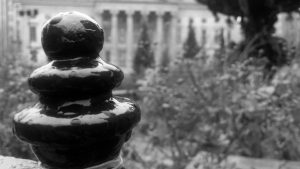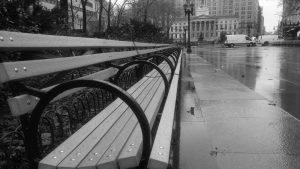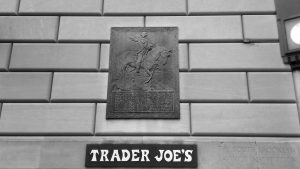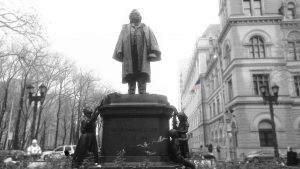In August 1776, the summer the Declaration of Independence was established, the American Revolution was still in effect. The battle of Long Island, better known as The battle of Brooklyn Heights, took place in all parts in Brooklyn extending all the way towards Long Island. This infamous fight is still popular and a beloved story by many Brooklynites. Retrospectively, the city was not modernized yet and cornfields overtook what is now buildings and roadways. George Washington led his soldiers through the vast fields and was later flanked and outnumbered by the redcoats (British and German army) nine hundred ninety-three was injured and three hundred sixty-four sacrificed their lives for this battle. Although the Americans was defeated in the end of this battle, the legacy still lives on. In the busy area of Court Street one can find a placard with the date, description, and quotes from the battle on what is now a Trader Joe’s establishment.
Although the park juxtaposed Borough Hall’s State Government Office is named Columbus park celebrating Christopher Columbus and his achievements, the most important part of the park that epitomizes Brooklyn , in my opinion, is the the statue of Henry Ward Beecher. The bronze and granite statue stands fourteen and a half feet tall created by John Quincy Adams Ward, who sculpted the figures, and Richard Morris Hunt, an architect who contributed the pedestal to the project. Beecher, a Connecticut born pastor was very radical person for his time. In 1847 he moved to Plymouth Congregational Church in Brooklyn heights which became the largest church and congregation in the United States with a 3,000 congregational following. He had very strong views that was not always recepted by the main public. Beecher was an abolitionist, supporter of women’s suffrage, and protector of children in a time where people were regularly undermined, violated, and oppressed. Beecher wasn’t ashamed of his opinions and voiced them through writings, sermons, and other lectures. The statue was dedicated to him by showing his main objectives in life. An African-American girl places leaves at his feet on one side to represent his strong anti-slavery dynamic. On the other side depicts a boy aiding a girl as she places garland, also, at his feet to show his protection of children. The statues holds a great deal of poeticism by showing Beecher’s greatest achievements and how they influenced an entire community.
Ironically, on this Thursday Borough Hall will be hosting a gathering for a campaign labeled National Day of Healing aka #Youarenotalone. As another Buzz blogger, Amanda, mentioned last week the gathering is for peace, love, and contentment. In a time of so much hate and loneliness we have the ability to give back some love in the form of fellowship. As we congregate by 209 Joralemon (State Government Office) sharing peace and words of respect, we will also be overlooked by an influential respecter of people, Henry Ward Beecher.









